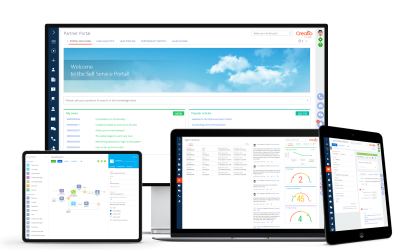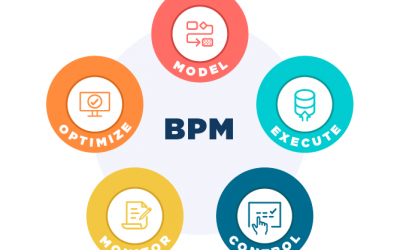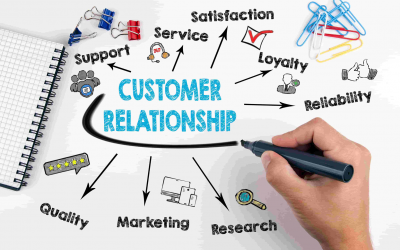The ongoing Corona-crisis and its devastating health and economic consequences has emphasized urgency and need for COO’s and C-suite executives to the focus on the future and their company’s digital transformation.
Through our work and experience in providing digital solutions to organizations across a wide range of sectors/industries, we have identified three common challenges faced by C-suite executives in their quest to “up their digital game”. Not only have we identified the challenges, but we’ve also found methods and tools to solve them, or at least, to make them less challenging.
Challenge #1 Breaking old habits and adopting new ways of working
The first challenge is perhaps the most pronounced and prominent amongst many organizations. Businesses are, of course, comprised of people that make up the organization itself. All of them a unique set of habits, fixed ways of working and exhibit a certain manner of thinking – one could call it a cultural and mental paradigm. When companies set out on their digital transformation journey and attempt to introduce new tools, resistance and opposition is a typical reaction if the cultural and mental paradigm is not managed adequately. This opposition can be so severe and entrenched that it can, and does, lead to the direct failure of the project.
Successful organizations understand the importance of implementation, not just strategy, and, moreover, recognize the crucial role of their people in this process.
The underlying causes of this resistance likely derives from a range of basic psychological (and also very human) reasons, including but not limited to: fearing the change will somehow make an employee less valuable, not having sufficient confidence in one’s ability to master new tools, not seeing the added value, and not feeling sufficiently involved in the process. Whatever the reasons may be, its clear that having your employees onboard and minimizing resistance is key to achieve a successful digital transformation.
With that said, we’ve found that overcoming this problem rests on three main pillars :
- Ensure that the ‘vision’ and the ‘why’ of the digital transformation is clearly communicated. Employees need to see and understand the end goal of what is trying to be achieved with the project. A certain level of excitement and positivity is of course crucial here. As such, attempt to communicate how the new tools or way of working will help your clients, will help the business make more sales and grow, and/or beat out the competition.
- Equally important and related to the first pillar, is communicating what the transformation means to the employees themselves. Focus for example, how the new tools could make their jobs easier (perhaps by automating administrative task they hate doing) or how it can benefit their own personal careers (by giving them the right tools to help meet their targets more effectively).
- The third pillar rests on giving employees a sense of ownership of the project. Employees should regularly be consulted prior, during and after the implementation of the project about their opinions, their needs, and their wants. Forcing a transformational project down their throats is probably going to make it hard to swallow. Instead, ask them what they want to eat first and serve them a good meal they actually like.
Challenge #2 Finding and implementing the right tools in the first place
Another core challenge in successfully completing a digital transformation is finding and implementing the ‘right’ tools in the first place. The problem is in fact two-fold: firstly there’s the challenge of determining what new digital tools are available and understanding which ones actually matter and are worth implementing (i.e. determining the digital need). Secondly, once the digital need is known, which tool is the ‘right’ fit in terms of, capabilities, user-friendliness and flexibility?
A good example of these problems can be found in the Business Process Management (BPM) software. BPM typically refers to the use of technology to execute or run recurring tasks in a business where previously manual input was needed. There are countless tasks which, if identified, could easily be automated away. For example, in Customer Relationship Management (CRM), sending selected emails (newsletters or interesting articles as part of customer retention efforts) at pre-defined times or following certain actions on behalf of the client can easily be automated. Another instance could be in addressing customer complaints. When a customer submits a complaint, the input triggers an automatic apology email whilst simultaneously submitting a ticket to relevant employees to investigate and address. Should the complaint not be addressed in a timely fashion, a new alert is triggered perhaps to a more senior manager, and so on. The possibilities are endless and very powerful. Various software programs have been developed precisely to execute these types of automations.
Thus, coming back to the problem, many organizations are unaware of the existence of powerful BPM tools, such as Creatio (a leading low-code, process automation and CRM platform), and therefore struggle to digitalize and automate redundant tasks resulting in wasted time and money. Having the right internal resources with a certain digital affinity keeping track new developments is key to not missing out on new opportunities.
Asides from the awareness problem, a related issue is that once a digital need is identified, how do you select the right tool and what are important selection criteria? In our experience, the two most important selection criteria, which may seem self-evident but are often overlooked or underestimated, are ‘integration feasibility’ and ‘simplicity’/ ‘use- friendliness’. There are of course many more important selection criteria but we argue these two are ‘must haves’.
On integration feasibility, following the CRM /BPM example, many companies run as many as 4 or more different software programs for sales, marketing and customer service operations. From a technical perspective ensuring that these four tools are connected is challenging enough but for a typical employee, learning to use four different systems (especially to use them well) is often near impossible. Not only are there adoption difficulties, but it creates a barrier between different organizational departments which rely on each other’s data or functions. The solution here is to always to consider the feasibility of integrating different systems and try to choose platforms that are sufficiently developed to run various business processes at once. So for the CRM example, why not choose platforms that are capable of running all three programs for sales, marketing and customer service?
Finally, on user-friendliness, many software programs have been developed that are full-function tools but are so complex it renders them practically useless without a team of professional IT experts running it. This means that if any of your business needs change, you’ll likely need external help to modify any processes. To solve this problem, more and more tools are being developed with so-called ‘low-code’ or even ‘no-code’ capabilities and user interfaces. Always choose tools that are simpler and flexible enough to be modified by your own internal team.
Challenge #3 Managing the learning curve
A third prominent challenge is ensuring that your team has the right knowledge, skills and training to actually use the tools to their full capabilities. If your employees are not using the tools, or don’t know how to, well, what’s the point of implementing them? We find that many tools being implemented are powerful systems but only about 30% – 40% of the features are actually being used. Yet, full price is always paid.
The problem here likely comes from software tools being developed externally and then implemented as an ‘out of the box’ system without any co-creation or adequate training. Simply buying licenses and providing employees with login codes is insufficient to have a successful digital transformation.
To solve this problem, we highlight the need to consider and complete two important tasks:
- First, ensure that the product or tool being implemented is adequately customized beginning and ‘co-created’. That means that the tools are not simply provided ‘as is’ (out of the box), but are co-created together to fit specific needs.
- Second, after implementation, ensure that an adequate coaching and training program is setup for employees to understand the system and its full capabilities. You want your team to get a degree of familiarity with the system that any new changes or modifications can be done internally instead of always relying on outside parties. Whilst most software programs typically also provide some form of e-learning content, we believe nothing beats face-to-face contact to get employees involved and enhance content absorption capacity.
Book a free consultation to see how we can help you overcome your digital challenges





